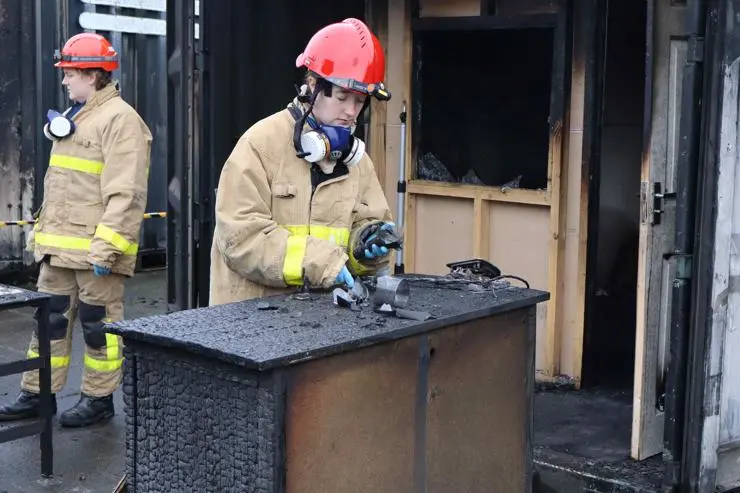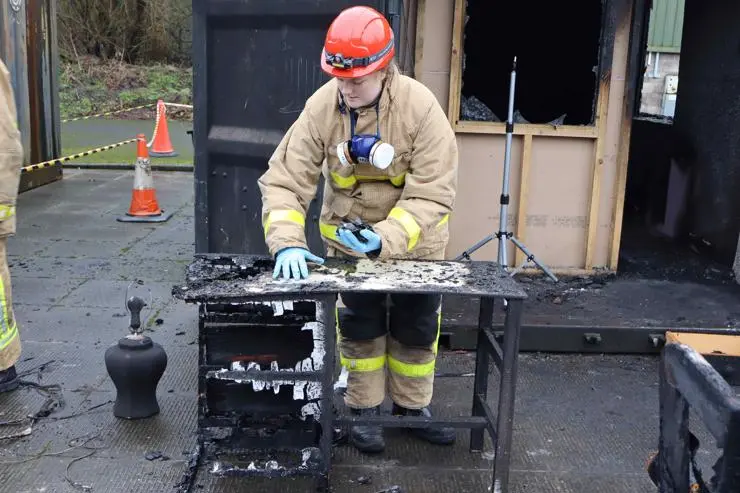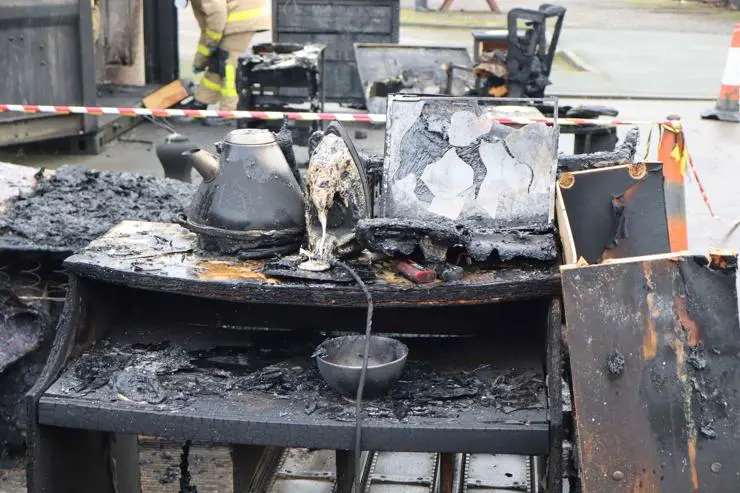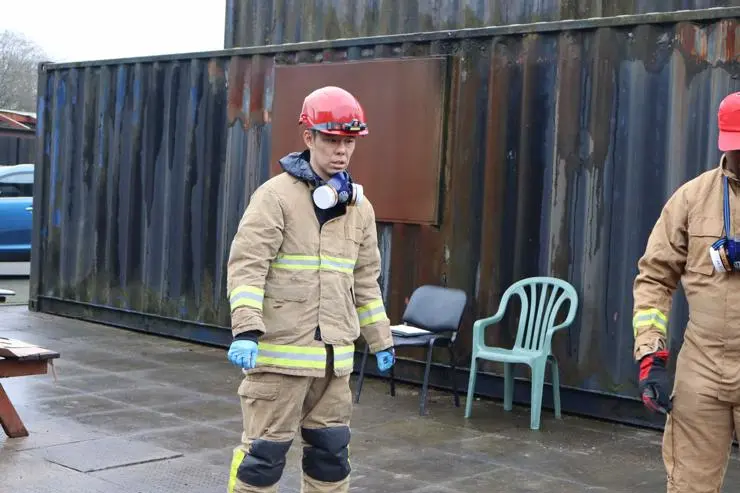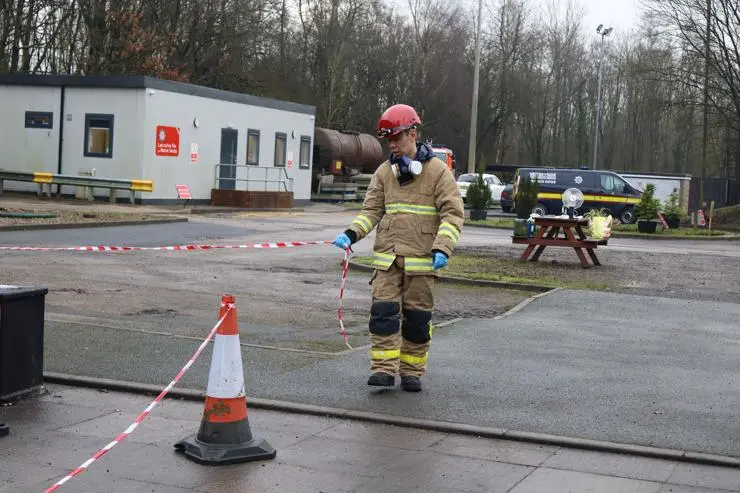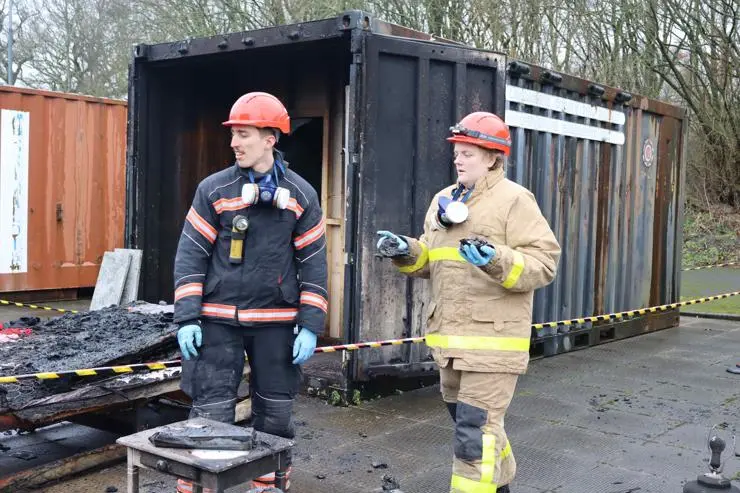Our students got to spend three days investigating container fires, trying to determine the causes through various means including specialist equipment and fire investigation dogs.
Here's what happened on the day:
Fire investigation is a meticulous process that combines science, technology, and expert intuition to determine the cause of a blaze. You'll gain hands-on experience in real-world scenarios, preparing you for a career in fire safety.
Investigating the fire scene
In the videos, Jordan stepped into the shoes of a fire investigator at Lancashire Fire & Rescue Service’s state-of-the-art training centre in Chorley. Under the guidance of our academics, two controlled fire scenarios were set up to mimic real-life incidents. The challenge? For our fire engineering students to piece together the clues and uncover the cause of the fires.
Using advanced investigative techniques, the students assessed fire patterns, material damage, and possible sources of ignition. Their mission was to apply their knowledge and critical thinking to determine whether these fires were accidental or the result of deliberate ignition.
Science and technology in fire investigation and dogs
In the initial investigation, Jordan used a Photoionization Detector (PID) machine—an advanced tool designed to detect volatile organic compounds like petrol. The results indicated traces of petrol, pointing to a possible accelerant. But science demands verification, and that’s where fire investigation dog Pi came in.
Trained to detect accelerants with remarkable accuracy, Pi confirmed the presence of petrol in the exact same location identified by the PID machine. This powerful combination of technology and trained expertise provided strong evidence that an accelerant played a role in the fire.
The final step: laboratory analysis
While on-site tools and investigative skills provide compelling initial findings, official confirmation is crucial. The collected evidence, including debris samples, is sent to a laboratory for further analysis. This step ensures scientific validation, helping fire investigators reach definitive conclusions about the fire’s origin and cause.
Hands-on learning for future fire investigators
We are dedicated to providing students with practical experience that prepares them for real-world challenges. Through collaborations with Lancashire Fire & Rescue Service, you'll engage in authentic investigations that bridge the gap between theory and practice.
Learn more about our fire engineering courses.

